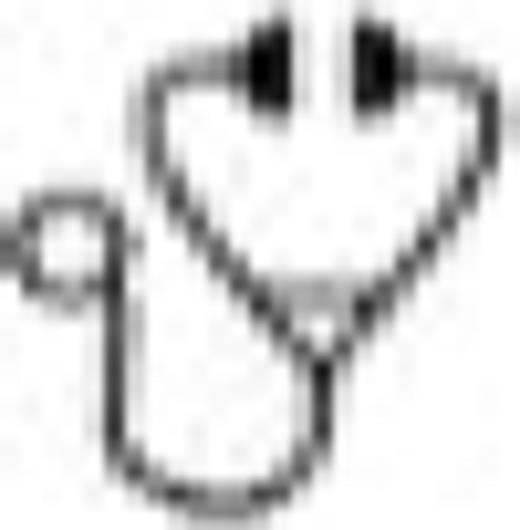
Background:
Relapse is the most frequent cause of failure after alloSCT for acute leukemia (AL). Unlike in CML, infusion of donor lymphocytes (DLI) is of limited efficacy in overt hematological relapse. Hence, it may be preferable to give DLI in complete hematological remission (CHR) after alloSCT, to exploit the allogeneic graft-versus-leukemia (GvL) effect either as maintenance in high risk patients (prophylactic DLI, proDLI), or as early intervention to prevent hematological recurrence in case of decreasing donor chimerism or minimal residual disease (preemptive DLI, preDLI). However, no systematic analysis of this strategy is available so far, neither concerning the optimal way of application, nor with respect to safety and clinical efficacy. Here, the Acute Leukemia Working Party of the EBMT presents results from a registry-based survey on 343 patients with AML (n=266) or ALL (n=77), who received DLI in CHR after alloSCT.
Patients:
Median age was 48y, 64% of patients had received alloSCT from a matched sibling, 36% from an 8/8 matched unrelated donor. Disease status at time of alloSCT was CR1/CR2/advanced in 68%/14%/17% of cases, respectively. Patients had received standard/reduced intensity conditioning in 53%/47% of cases. Before alloSCT, 55% had received in vivo T-cell depletion (TCD), 16% ex vivo TCD, 10% in vivo plus ex vivo, and 19% no TCD. Reasons for preDLI were persisting mixed or decreasing donor cells chimerism (n=167, 49%) and persisting or recurrent minimal residual disease (MRD; n=32, 9%). ProDLI without any sign of leukemia was given to 144 patients (42%) with high risk disease
Results:
Median follow up from DLI1 was 6.5 years (range, 1.1-14.5). Median interval from alloSCT to first DLI (DLI1) was 180 days (range, 15-1178). Patients received a median of 2 infusions with the median CD3+ cell dose at DLI1 being 1x106/kg (range, 0.1-163). Reasons to discontinue DLI were: number of planned infusions reached (56%), GvHD (17%), disease progression (13%), and documented improvement of donor chimerism (6%).
At 5y from DLI1, cumulative incidence of leukemia relapse was 43% and 28% in patients receiving preDLI for MRD and mixed chimerism, and 28% among recipients of proDLI given for maintenance in high risk disease. The corresponding 5y OS rates were 55%, 66% and 64%, 5y-LFS rates were 52%, 57% and 58%. Efficacy of preDLI could be directly demonstrated by decreasing MRD in 71% (15/21) and by improvement of donor chimerism in 68% (110/163) of informative patients. Furthermore, hematologic improvement was observed in 13 patients following proDLI.
Cumulative incidences of acute GvHD grade II-IV and chronic GvHD after DLI were 13% and 32%, respectively. A multivariate model identified a history of aGvHD ≥grade II after alloSCT (p=0.009, HR 2.1, 95% CI 1.2-3.7), an interval from alloSCT to DLI <6 months (p=0.003, HR 0.997, 95% CI 0.006-0.999), and a CD3+ cell count >1 x 106/kg at DLI1 (p=0.024, HR 1.011, 95% CI 1.001-1.021) as risk factors for induction of GvHD after DLI in CHR. One hundred and thirty three patients (39%) had died at last follow-up, with relapse still being the most frequent cause of death (n=87). Sixteen patients (5% of the entire cohort) died from DLI-induced GvHD, and 29 patients died from other courses.
In summary, in this large cohort of patients receiving DLI for AL in CHR after alloSCT, efficacy of preemptive DLI cells could be demonstrated in 69% of patients. About half of patients with MRD, and >70% of patients with mixed chimerism did not experience hematological relapse during a follow up period of >5 years, suggesting a clinically meaningful effect of preDLI in AL. GvHD was the most devastating complication, leading to death in 5% of patients. The identification of risk factors for GvHD may influence the selection of candidates for prophylactic and preemptive DLI in general, and may help to refine the use of DLI in this context with respect to cell dose and timing.
Schmid:Neovii: Consultancy; Janssen Cilag: Other: Travel grand. Bug:Celgene, Novartis: Research Funding; NordMedica, Boehringer Ingelheim, Gilead: Membership on an entity's Board of Directors or advisory committees; TEVA Oncology, Astellas: Other: Travel Grant. Tischer:Sanofi-Aventis: Other: advisory board. Esteve:Celgene: Consultancy, Honoraria; Janssen: Consultancy, Honoraria.
Author notes
Asterisk with author names denotes non-ASH members.

This icon denotes a clinically relevant abstract

This feature is available to Subscribers Only
Sign In or Create an Account Close Modal